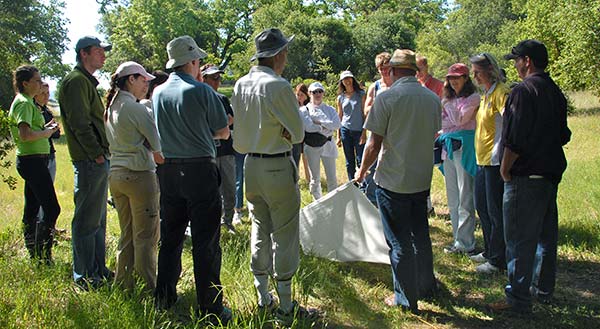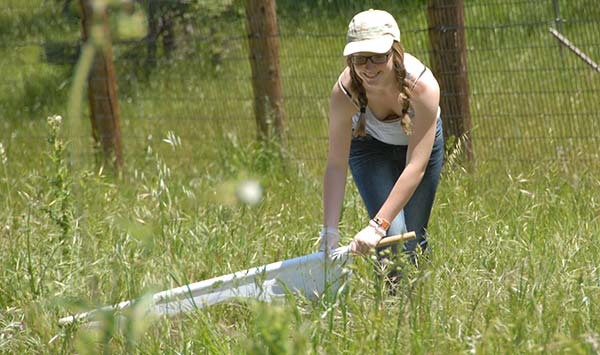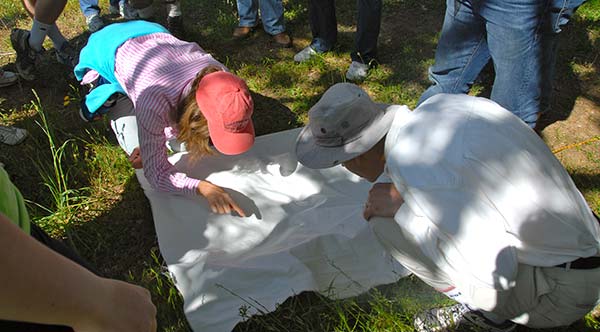Studies have shown important differences between East and West Coast Lyme disease such as the type of tick carrier, the principal hosts, and the seasonality. But there is still much that is unknown. At Bay Area Lyme Foundation, we are actively funding new research to better understand the unique ecology and biology of Lyme disease here in the West.
Project Objectives
The Bay Area Tick Study is an ongoing investigation into the prevalence of ticks and tick infections at a number of locations throughout the San Francisco Bay Area.
Repeat collection at sites previously visited as well as expanded collection at additional sites will allow larger sample sizes and also demonstrate whether prevalence fluctuates from year-to-year and across locations. (Previous studies from Sonoma and Mendocino Counties suggest large variations year-to-year.)
The end goal is to build a comprehensive landscape model for Lyme disease ecology throughout the Bay Area. In addition to establishing a baseline, this landscape will provide a foundation for longer-term research that would properly address the impacts of weather and climate change upon tick density and prevalence.
Method
Adult and nymphal ticks were collected using standard surveillance techniques by dragging a white flannel blanket along vegetation and leaf litter in defined transects across different habitats including grassland, chaparral, oak woodland, and redwood forest.
Ticks were then tested for Borrelia burgdorferi DNA using polymerase chain reaction (PCR) analysis and the Borrelia strains characterized by DNA sequencing. In addition, the ticks were also tested for common co-infections.
Lead researcher(s)
Dan Salkeld, PhD, Research Scientist, Woods Institute for the Environment, Stanford University & Nate Nieto, PhD, Lecturer, Northern Arizona University
Timeline
Tick collections were conducted in Spring 2012 and 2013. Study results were published in early 2014. Further research extensions are under review.
Project Outcomes
The study found that Borrelia spirochetes are endemic in San Mateo and Santa Clara counties at levels similar to other counties in north-western California (e.g. Mendocino, Sonoma, Marin).
Explained Dan Salkeld, principal investigator:
“We found ticks carrying B. burgdorferi in nearly every park that we looked–and not just in wooded areas…
… While overall infection rates are low (the presence of Borrelia ranged from 1% – 7%), ticks carrying the bacteria are undoubtedly present and widespread in California.”
Also notable was the prevalence of Borrelia miyamotoi, a pathogen causing similar symptoms to Lyme disease. (Read more about Borrelia miyamotoi.)
Further Details
Read the Study Results as published in the CDC journal Emerging Infectious Diseases (Salkeld DJ, Cinkovich S, Nieto NC, “Tick-borne Pathogens in Northwestern California, USA” [letter], Emerging Infectious Diseases, March 2014)
And for more media coverage on this study see the following:
- Stanford University News features Tick Study Results and Implications
- The Bay Area’s KRON 4 talks ticks with former BAL executive director Ana Thompson
Learn more about ongoing ecology projects in Ecology of Lyme Disease.

Scientists Eric Lambin, Dan Salkeld and Nate Nieto joined Bay Area Lyme Foundation founders and community volunteers to lead the tick collection effort and demonstrate tick dragging techniques.

A community volunteer drags for ticks.

Bay Area Lyme Foundation Founder and President, Laure Woods, examines ticks collected at one of the study sites in May 2012.
For more information about this or other project funding opportunities, contact our Development Office.